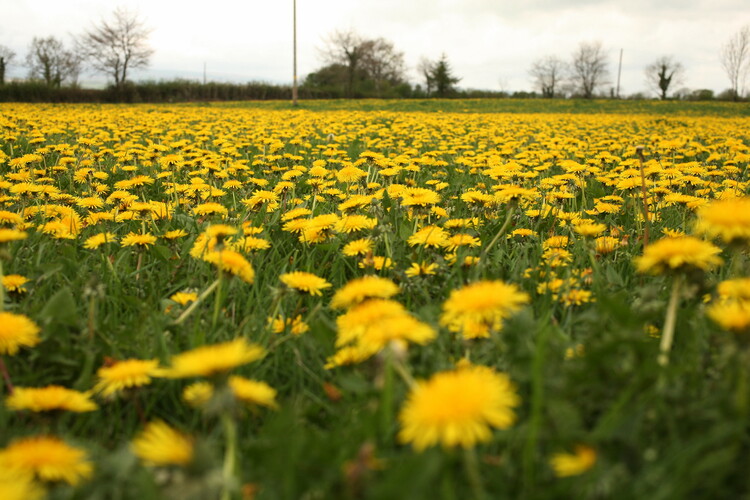UCD Horticulture develops 'Top 10 Pollinator-friendly Plants' guide
News
- AgriFood Matters Podcast Series
- Recent News 2022
- Recent News 2023
- 22/23 School Awards Ceremony
- UCD Teagasc Knowledge Transfer Funded Masters 2023
- SAFS Achieves First Silver Athena Swan Award in UCD
- Ensuring Food Security on the Island of Ireland
- UCD Masters in Agricultural Extension and Innovation Webinar
- UCD Horticulture develops 'Top 10 Pollinator-friendly Plants' guide
- UCD & Macra Agricultural Skillnet - MSc Agricultural Extention and Innovation
- Ireland’s Claire Mc Cormack is first visiting global agricultural journalist
- ‘Sustainable Food Systems’ the theme at the Agri Aware and UCD stand at the National Ploughing Championships
- UCD leads ‘Ireland Day’ at Science Summit at UNGA78 in New York
- BAgrSc class of 1983 reunion
- UCD School of Agriculture and Food Science Alumni Profile
- Leading UCD, Queens and Sheffield researchers awarded €31.5 million to transform food system
- School of Agriculture & Food Science Awards 2023
- Dr Helen Sheridan appointed to the Teagasc Authority
- BSc Sustainable Food Systems
- Exciting PhD Opportunity
- Graduate Spotlight: Richard Shakespeare
- Graduate Spotlight: Seán Molloy
- Coillte Launches New Foresty Scholarship Programme
- My Uni Life returns to RTE featuring UCD students & Lyons Farm
- University College Dublin researchers recruiting horses for Equine Headshaking Syndrome research.
- Farming Minds Project
- One Health: UCD launches pioneering new centre for better health of people and the planet
- UCD Agriculture, Food Science & Human Nutrition Careers Day 2024
- Farm Walk and Talk Returns to Lyons Farm
- UCD Teagasc Knowledge Transfer Funded Masters 2024
- UCD SAFS celebrates St.Patricks Day in China
- Crillo Cattle - Could heat resistant cattle be the industry's answer to climate change?
- Emerging Greentech Start-Up Wins UCD’s 2024 VentureLaunch Accelerator Programme
- UCD Summer Schools 2024
- UCD School of Agriculture & Food Science Graduate Taught Webinar Series
- A number of exciting PhD Opportunities Available
- Our Rural Future: Minister Humphreys launches first ever bursary to support Masters Students in field of rural development
- New collaborative research centre to transform food system launches at UCD
- PWE - Why it's one of the best thing about studying Ag & Food Science
- ‘We need a one-cycle agri-food system,’ says FAO Director General
- Aoife Feeney - Studying at UCD through DARE
- Beef-Quest Research Project aims to Reduce Age of Cattle Finishing
- UCD School of Agriculture & Food Science Celebrates it's new Class of 2024
- Adaptive predator management to promote breeding wader conservation
- GDIC Conferring Ceremony 2024
- The launch of the new FBD UCD agricultural research and education centre takes place at UCD.

A new guide to help boost Ireland's population of insect pollinators has been developed by UCD Horticulture.
The All-Ireland Pollinator Plan has released a new free resource, '(opens in a new window)Top 10 Pollinator-friendly Plants for Different Situations', a booklet containing 24 lists of native and non-native pollinator-friendly plants that are suitable for different urban situations including gardens, hanging baskets, and ponds.
The guide was developed in collaboration with (opens in a new window)Dr Noeleen Smyth, from the UCD School of Agriculture and Food Science.
The species selected are based on personal observations, the Royal Horticultural Society’s ‘Perfect for Pollinators’ lists, hobbyist websites, and discussions with horticulturalists.
The main purpose of the guide is to highlight some known pollinator-friendly plants for different situations.
“We can all make a difference to the survival of our bees and pollinating insects by planting pollinator friendly plants in our gardens,” said Dr Smyth.
In Ireland, there are around 100 different species of wild bees and 180 species of hoverflies, and it is well documented that these insect pollinators, and others such as wasps, moths, butterflies, and ants, are vital when it comes to pollinating crops and wild plants.
However these pollinators are in decline due to a lack of abundance and diversity of flowering plants – to ensure a healthy balanced diet, they need to be able to feed on pollen and nectar from a range of flowers from early spring to autumn.
As wild bees hibernate in winter, the plant suggested in the new 'Top 10' guide are mainly focused on species that flower during this period.
“We’re thrilled to be releasing 'Top Ten Pollinator-friendly Plants for Different Situations', and would like to thank Dr Noeleen Smyth of UCD Horticulture for developing it with us,” said Dr Una Fitzpatrick, All-Ireland Pollinator Plan co-founder.
“One of the main threats to pollinators in Ireland is the lack of food, so it’s really important that our landscape provides plenty of nectar and pollen-rich plants to help them survive and complete their life cycles.”
Adding: “Native plants are the better option, so the first part of the guide focuses on native wildflowers, trees and shrubs, and hedgerows, with advice on how to grow and manage them for pollinators.
“However, there is also a place for non-native, ornamental plants in the right settings, so the second part of the guide looks at non-native ornamental species in different situations like coastal areas, acid and alkaline soils, and urban containers.
“Each list includes advice on how to grow and look after your plants, and when you can expect them to flower. We hope this guideline is a useful tool for anyone wanting grow pollinator-friendly plants, whether you have a meadow, a garden, or even just a window box.”
All plants in the 2023 guide have been checked against known invasive species, or species that are at risk of being invasive.
By: David Kearns, Digital Journalist / Media Officer, UCD University Relations
To contact the UCD News & Content Team, email: newsdesk@ucd.ie